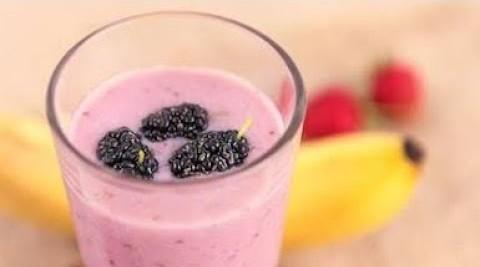In ancient times, the mulberry was used as a tonic for the Chinese emperor and nicknamed the “sacred folk fruit.” Mulberries have a tart, sweet taste and contain high levels of nutritional compounds. They have been used in Chinese medicine to prevent cancer and are packed with antioxidants. They can help those suffering from insomnia to get a good night’s sleep and may help prevent liver disease.
Mulberries contain a variety of minerals, vitamins, amino acids, active proteins, carotene, and other nutrients. Their iron and niacin content is several times that of apples. A small amount of berries can provide the body with much beneficial nutrition.
Mulberries are rich in anthocyanins. These powerful antioxidants are useful for delaying aging, controlling blood sugar, preventing cancer, and enhancing immunity. They are also good for eyesight and can relieve eye fatigue.

Mulberries are also known to reduce excess fat and lower cholesterol. If you have symptoms such as loss of appetite, indigestion, or abdominal distension after meals, eating some mulberries can also help.
Fresh mulberries can quench your thirst. Purple or black mulberries are the best. Soak the fruit in salt water for five minutes and rinse with plenty of water. Then they’re ready for you to eat.
Ways to process mulberries
Mulberries are best when eaten fresh. However, they can be dried or steamed and then dried. They also taste good after being processed in a variety of ways.
1. Mulberry juice
Take one and a half cups of fresh mulberries, wash, and tie in muslin gauze. Crush the mulberries and let the juice drip out of the gauze. Add warm water, then it’s ready for you to drink.
2. Mulberry paste
Take two pounds of fresh mulberries and heat them to form a thin paste. Add 3/4 to 1 cup of honey and cook slowly until thick. It’s ready to eat when cool. Avoid using iron cookware when cooking mulberry paste.

3. Mulberry wine
Take one cup of fresh mulberries, wash, and tie in muslin gauze. Crush the mulberries and let the juice drip out of the gauze. Pour into 2/3 cup of Japanese shochu or low-proof vodka. Stir thoroughly, then serve.
4. Mulberry vinegar
Take half a cup of fresh mulberries, one spoonful of red rock sugar, and one bottle of brown rice vinegar. The mulberries are washed, drained, and placed in a cool place until dry. Spread a layer of mulberries on the bottom of a bottle, add a layer of rock sugar, and finally add the brown rice vinegar. Seal the bottle and store it for two to three months. Take 2 tablespoonfuls at a time, diluted with about six ounces of cold water. It’s ready to serve.
Contraindications to eating mulberries
Mulberries are not suitable for people with loose stools caused by spleen insufficiency. Children and adolescents should not eat too many, because mulberries contain higher levels of the trypsin inhibitor niacin, which can impact the absorption of iron, calcium, zinc, and other minerals that are essential for normal growth and development.
Translated by Jean Chen and edited by Helen







